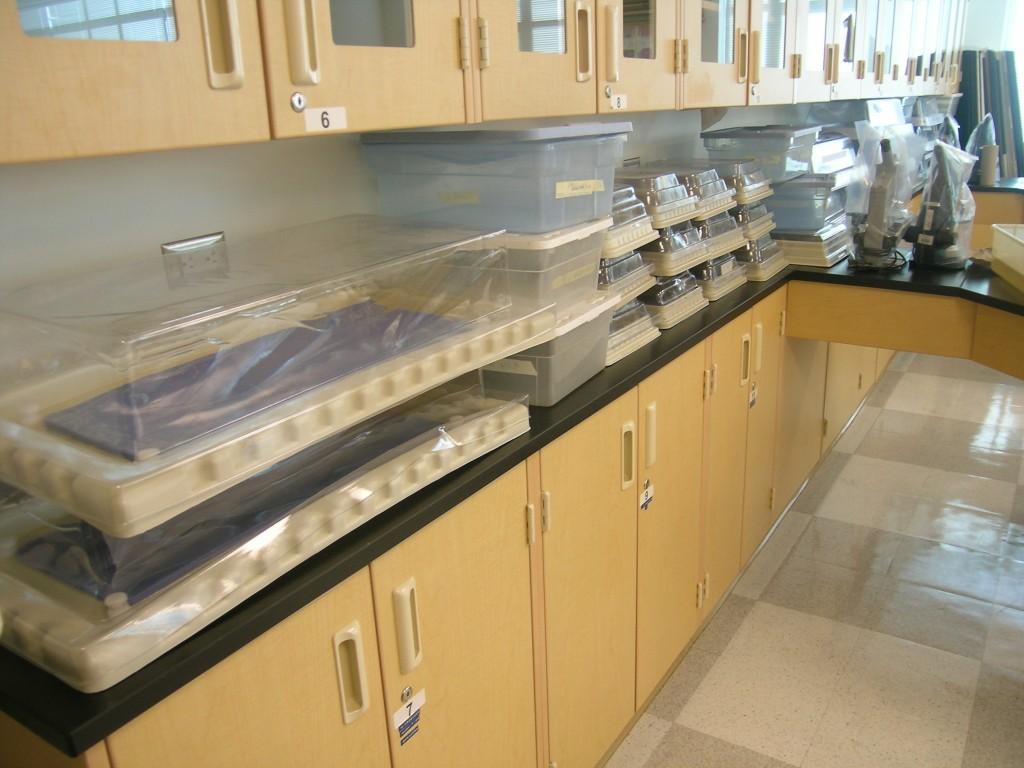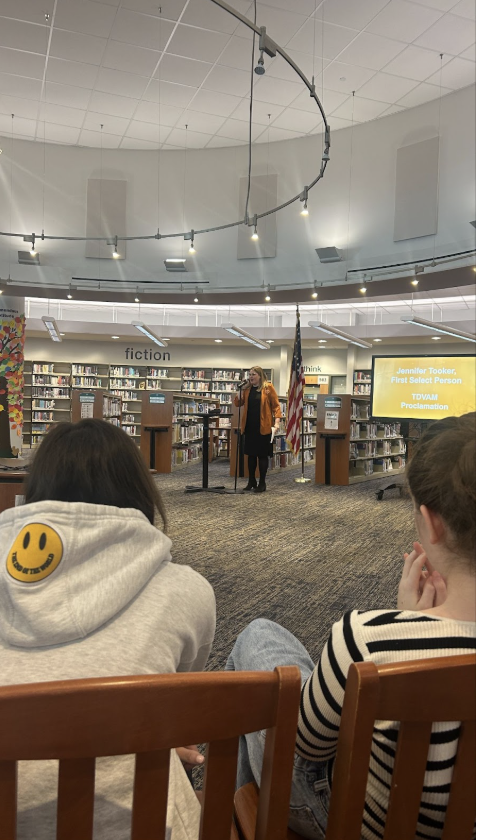Although she is now a senior, Jenn Hoets ’11 has much to recall from her freshman year biology course. She thinks back to classes spent discussing evolution at length and extracting DNA to study during lab periods. And of course there is the memory of walking into her classroom to a series of ominously covered coffins. These containers, filled with deceased cats used for the anatomy class, pervaded a wretched stench throughout her classroom that she is sure to never forget.
It is likely that all Staples students will have encountered dissections at some point in their high school career by graduation. A core component of freshman biology classes, dissections are also used by electives anatomy and marine biology.
“Students do get exposure to organs and so forth in middle school,” said Dr. A.J. Scheetz, science department chair for grades 6 through 12. According to Scheetz, Westport students are exposed to dissections of the human heart and cow eyes. Students at Coleytown Middle School, he added, “[might] actually have seen an open heart surgery performed live on video.”
When these students enter Staples, they are required to take biology as freshmen, a factor that makes dissections virtually unavoidable. Because of this, science teacher Michael Lazaroff said, “You get everything from the students who can’t wait to get their hands on the animals to the students who are very uncomfortable.”
Lazaroff, who teaches forensics and anatomy in addition to biology, says his classroom dissection policies have experienced little change since he first came to Staples in 1993.
“I [have] students choose their own partners,” Lazaroff said of his dissection practice. “As long as one of them [is] willing to do the work, no one [is] actually required to touch the specimen.”
In Lazaroff’s anatomy class, however, dissection is a definite requirement. “Some [students] end up wanting to go into healthcare as a career, and it’s something they’re going to have to be exposed to anyway,” he said.
Since the anatomy class is an elective, Lazaroff finds that many of his students have interests in becoming doctors, surgeons and veterinarians.
“You need to know what’s going on inside of cats because some of your patients will be cats,” Lazaroff said. “[And] I would hate to have a surgeon who hasn’t done a lot of dissection before they learned how to do surgery.”
In all of his classes, dissection subjects vary depending on the curriculum. Biology students dissect earthworm and crawfish in order to observe animal phyla. Anatomy students dissect cats and fetal pigs so they can see anatomical distinctions between herbivores and carnivores. And in Lazaroff’s forensics classes, he models an autopsy of a pig to show the measures taken by forensics pathologists in examining bodies.
“I fully support the use of dissections as a learning tool,” Scheetz said. “This is the only time in high school where a student has that opportunity…it would be a reduction in learning quality if students [could not dissect].”
Ellen Kaminski ’11 agrees with Scheetz’s logic. “Instead of just memorizing facts from a textbook, the frog dissection and others are great examples of the application of our knowledge,” she said.
Other students don’t see the importance of dissections in the high school environment. “I think you can learn about the body just as easily through diagrams,” said Lauren Hodes ’11, who added that students always tend to “screw up” when participating in dissections.
“Either a group ends up cutting the organ they are intended to study, or they are unable to identify it as a whole,” Hodes said. “I really do love science…but I don’t understand the point of dissecting.”
There are some unique cases in which students are unwilling to participate for moral reasons or otherwise, but both Scheetz and Lazaroff say this is uncommon.
Scheetz spoke of a student a couple of years ago who felt discomfort with her close proximity to the dead felines: “We tried to cover them up as best [as] we could, but that’s the biggest controversy we’ve had that I can remember.”
Hoets says she was always turned off by the smell of the chemical that preserved the frog bodies in her class. “It stays on your skin for days, and you just smell really bad,” she said. “And whenever you get a whiff of it, you kind of want to vomit.”
But Lazaroff finds that even students who take moral offense to dissection don’t always practice what they preach. “I had one student who was militantly opposed to it,” Lazaroff said. “Ironically, she wore leather.”
Related articles
- Lesson Plan for Using Virtual Frog Dissections in the Classroom (brighthub.com)
- NM High School Senior Explores New Territory with Genetics Project (kitsapsun.com)

















































Julian Carr • Oct 12, 2010 at 10:56 am
The National Science Teachers Association—one of the largest science education organizations in the world—amended its official position statement in 2008 to acknowledge the educational efficacy of non-animal learning methods as replacements for animal dissection. This revision reflects the growing consensus in science education literature that non-animal learning methods teach students as well as or better than animal dissection, whether measured by objective criteria or student and teacher preferences. (Please see http://www.dissectionalternatives.org/concerned/dissection_comparative_studies.pdf for a partial list of such studies.) Furthermore, these methods are more humane and offer economic, environmental, and pedagogical advantages.
Also, contrary to statements made in the article, it should be noted that there are many professions rooted in the biological sciences that do not involve the invasive or harmful use of animals and that non-animal teaching methods will better prepare students for future careers in the biological sciences. The medical and veterinary professions are two examples of such fields and, in fact, nearly 95% of U.S. medical schools use no live animals in their curricula (and, at the schools that do, the use of live animals is optional and not required). In 2007, the American Medical Student Association (AMSA) passed a resolution stating that it “strongly encourages the replacement of animal laboratories with non-animal alternatives in undergraduate medical education.”
Replacing animal dissection with one of the many available alternatives would not only reduce the number of animals who are killed and used in dissection but also provide a richer learning experience for students—and conserve Staples High School’s valuable resources. For more information, please visit PETA.org/dissection.